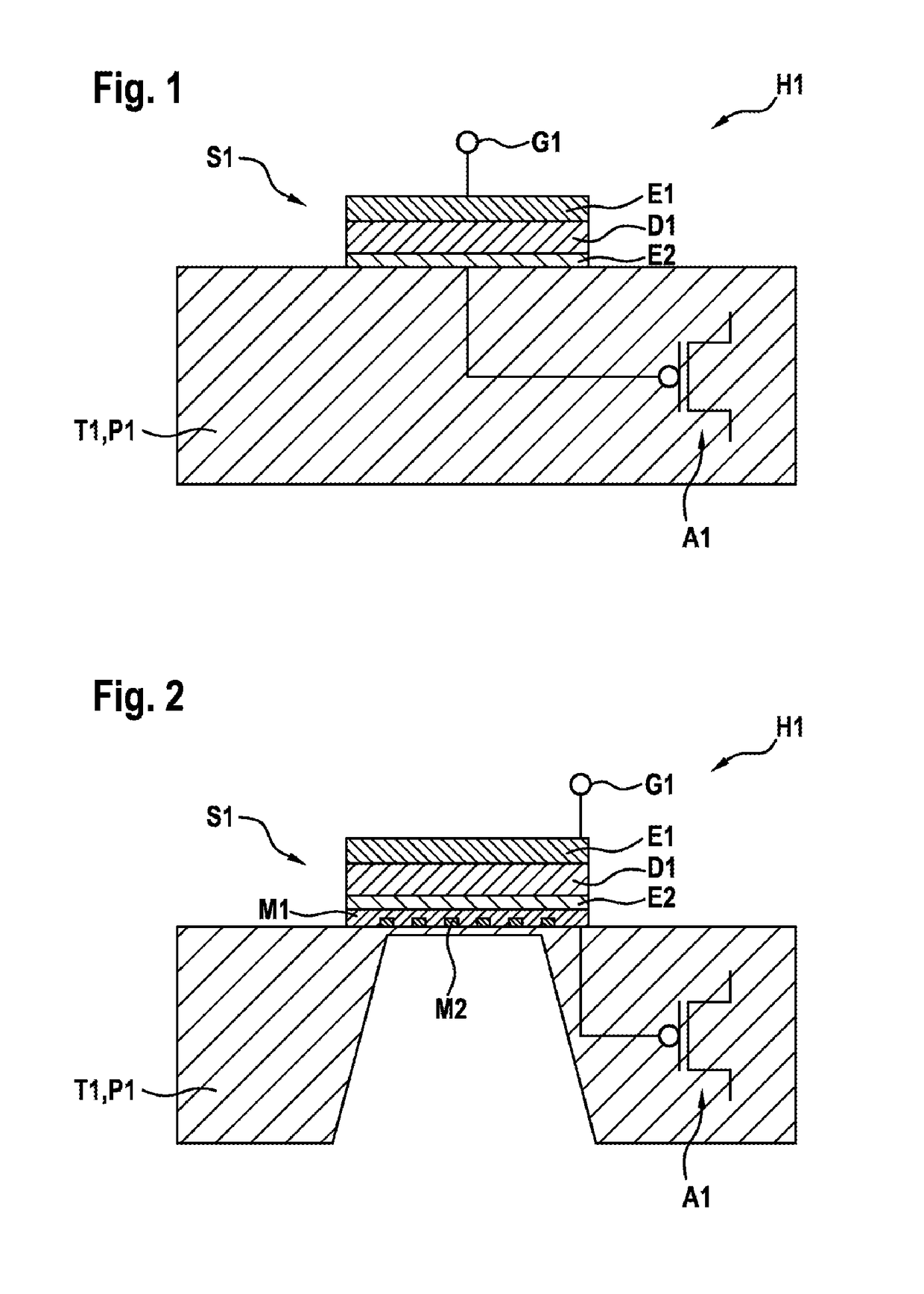Semiconductor-Based Gas Sensor Assembly for Detecting a Gas and Corresponding Production Method
a technology of gas sensor and semiconductor, applied in the direction of instruments, measurement devices, scientific instruments, etc., can solve the problems of gas signal attenuation, serious signal drift, and low capacitance formation in the corresponding gate stack, so as to improve the resolution, the effect of high sensitivity and high capacitance formed by the gas-sensitive structur
- Summary
- Abstract
- Description
- Claims
- Application Information
AI Technical Summary
Benefits of technology
Problems solved by technology
Method used
Image
Examples
first embodiment
[0028]FIG. 1 shows a schematic perpendicular cross-sectional view for elucidating a semiconductor-based gas sensor assembly for detecting a gas and a corresponding production method in accordance with the present invention.
[0029]In FIG. 1, reference sign H1 denotes a semiconductor-based gas sensor assembly for detecting a gas. The semiconductor-based gas sensor assembly H1 comprises a gas-sensitive structure S1 comprising a gas electrode E1, an electrode E2 and an at least partly polarizable dielectric layer D1 arranged between the gas electrode E1 and the electrode E2. The gas-sensitive structure S1 is suitable for forming a capacitance during operation. Said capacitance of the gas-sensitive structure S1 is coupled to a gate G1 of a read-out sensor A1 and the read-out sensor A1 is situated in a substrate T1.
[0030]As shown in FIG. 1, in contrast to the suspended gate concept, there is no need for an air gap that reduces the gate capacitance and impairs the transmission of the signal...
second embodiment
[0032]FIG. 2 shows a schematic perpendicular cross-sectional view for elucidating a semiconductor-based gas sensor assembly for detecting a gas and a corresponding production method in accordance with the present invention.
[0033]FIG. 2 shows the semiconductor-based gas sensor assembly H1 from FIG. 1 with the difference that the gas-sensitive structure S1 from FIG. 1 is arranged on a membrane M1 with an integrated heater M2. Furthermore, as shown in FIG. 2, a cutout is formed in the substrate T1 or the passivation layer P1 in the region of the gas-sensitive structure. In this case, the cutout is situated below the gas-sensitive structure S1 and is formed in the substrate T1 or the passivation layer P1. The cutout advantageously serves the purpose that the membrane is heated particularly rapidly by the integrated heating element on account of a thermal mass that is as small as possible, since a heat generated by the heating element does not have to be additionally emitted into or onto...
PUM
| Property | Measurement | Unit |
|---|---|---|
| temperatures | aaaaa | aaaaa |
| polarizable | aaaaa | aaaaa |
| capacitance | aaaaa | aaaaa |
Abstract
Description
Claims
Application Information
 Login to View More
Login to View More - R&D
- Intellectual Property
- Life Sciences
- Materials
- Tech Scout
- Unparalleled Data Quality
- Higher Quality Content
- 60% Fewer Hallucinations
Browse by: Latest US Patents, China's latest patents, Technical Efficacy Thesaurus, Application Domain, Technology Topic, Popular Technical Reports.
© 2025 PatSnap. All rights reserved.Legal|Privacy policy|Modern Slavery Act Transparency Statement|Sitemap|About US| Contact US: help@patsnap.com


